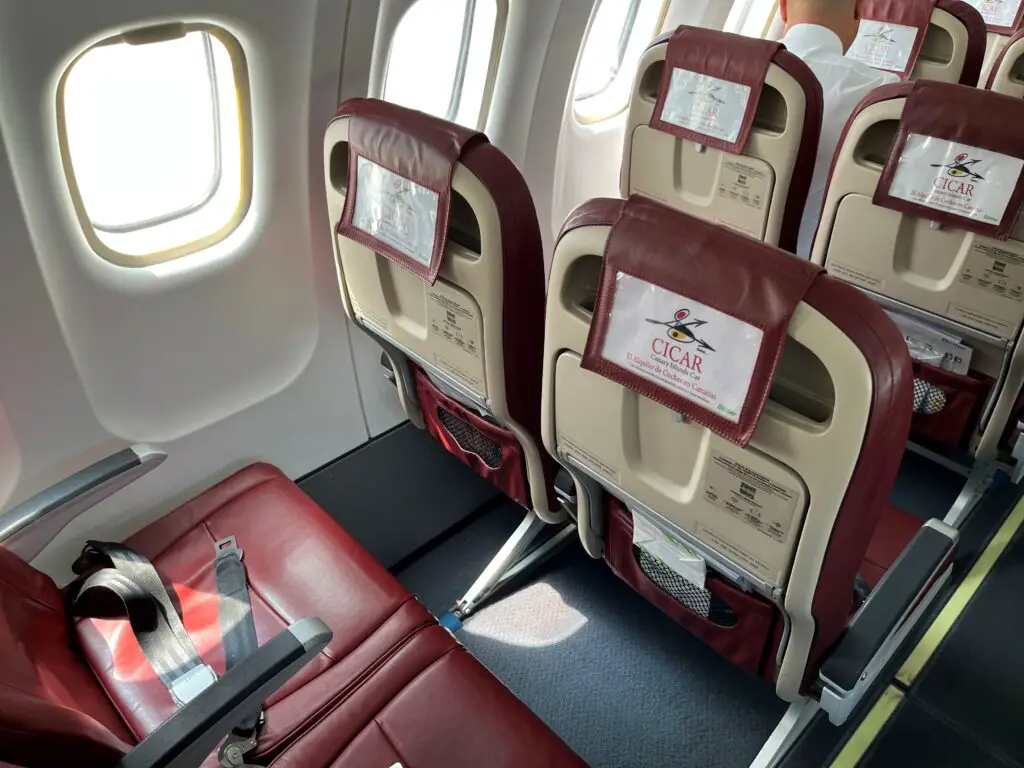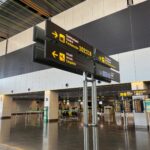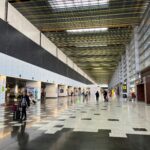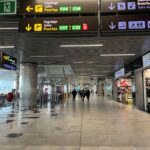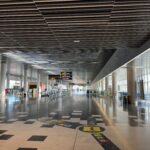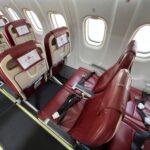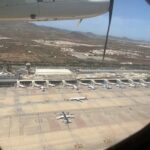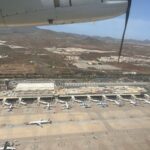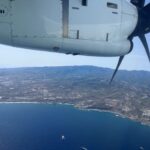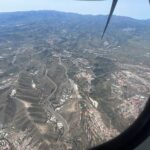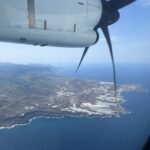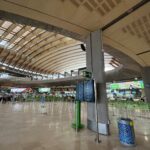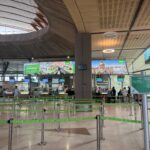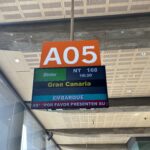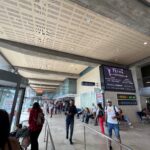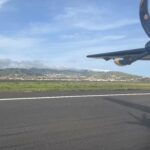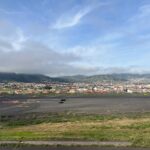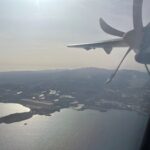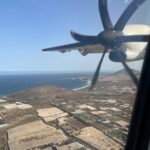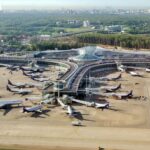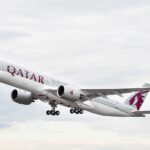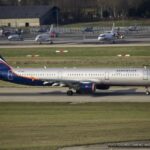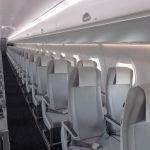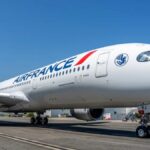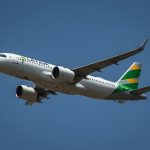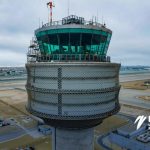
When the largest cities in your region are separated between islands, that is where public transport comes in handy — and in the Canary Islands, this is particularly true. The two largest urban agglomerations, of Las Palmas de Gran Canaria and Santa Cruz de Tenerife, can only be connected by boat or by plane.
Both modals are thus fundamental parts of daily life in the Islands insofar as with them, people can come from the continent, but also the islands themselves can be connected year-round and very conveniently.

With the airplane more specifically, Binter Canarias plays an important role. This year alone, the airline is expected to fly, in its interisland business, over 5.2 million seats, according to data by Cirium’s Diio Mi application. Add competitor Canaryfly’s 1 million seats to this equation and you have over 6.2 million seats between islands in a year.
This may not seem much when you consider the total traffic from the Archipelago this year, as per Cirium, of 47.4 million seats, it is still a very big deal for locals, as the local population amounts to 2.177 million people.
So our plan was to try out Binter’s interisland services to Tenerife Norte and returning to Las Palmas by late afternoon.
NT145 LPA-TFN
After visiting Binter Technic’s Las Palmas facilities, we made our way to the terminal which, at that time, was not packed. Binter and Canaryfly have their own check-in areas, which are adjacent to an entry to the airside.
Safety screening took less than five minutes. The airside at Las Palmas looked quite fresh, though I guess it can get pretty crowded at times.
The number of departures and the variety of airlines and destinations, in time, was fascinating for an airport that serves an island with just over 850,000 inhabitants.
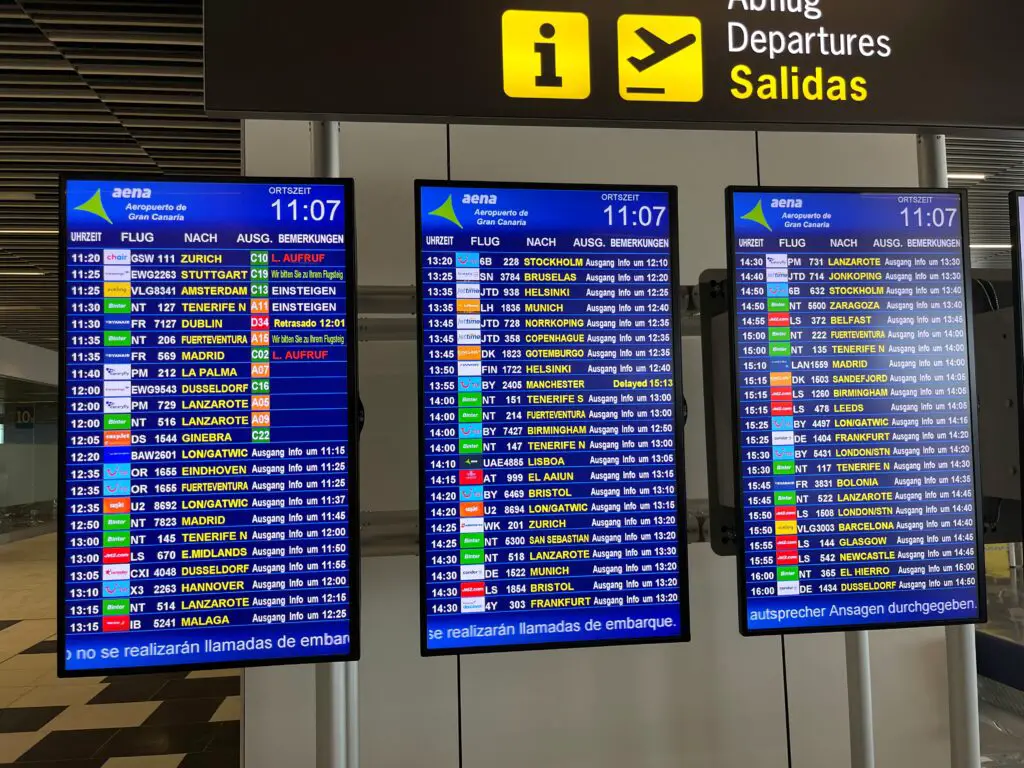
Interisland departures are generally made in a separate area on the airside underground. And while Binter is trying to cater to passengers from the Continent in its flights to these destinations, it apparently thinks they can be a good sell to the locals, too, as billboards all over the airport showed.

There at the apron, traffic was intense despite the time not being particularly on-peak.

Our aircraft that afternoon had come from Tenerife Norte, where it was based that day. It had arrived on time, so it looked like we would be on time — a very important attribute for a service that is also focused on the local business travel.
Either way, the turnaround time from one flight to the next was an hour; the ATR 72 can be turned around in less than half an hour, so that was way more than enough.
Boarding was started on time, starting from passenger in the front rows and so on.
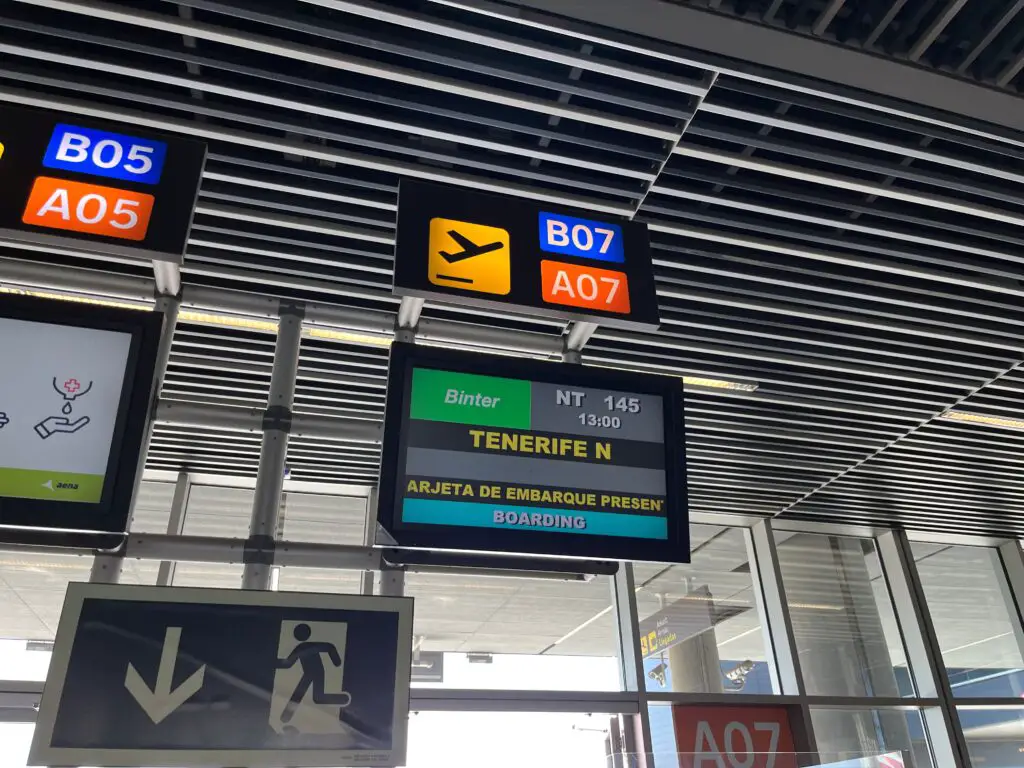
NT145 would be operated by EC-NMF — an ATR 72-600, now that all of Binter’s active turboprop fleet is composed by this series, the two remaining 72-500 having been retired from service.
Now NMF, named «Teide» after the volcano in Tenerife which is Spain’s highest point, was delivered to the airline brand new in November 2020, according to Planespotters.net.
Given that the aircraft was quite new, the cabin felt so — and in time, the cabin of the -600 series is a great evolution from the older ATRs, feeling much more fresh and bright. The red seats, which somehow contrast nicely with Binter’s green colors, gave a good impression.
I was sitting near the engine and the pitch felt quite okay. Remember, apart from the occasional service to the Azores or Morocco, these aircraft largely make very short stages (as today’s), so you don’t really need much comfort — something Binter tried to do with their Embraer E2s, instead.
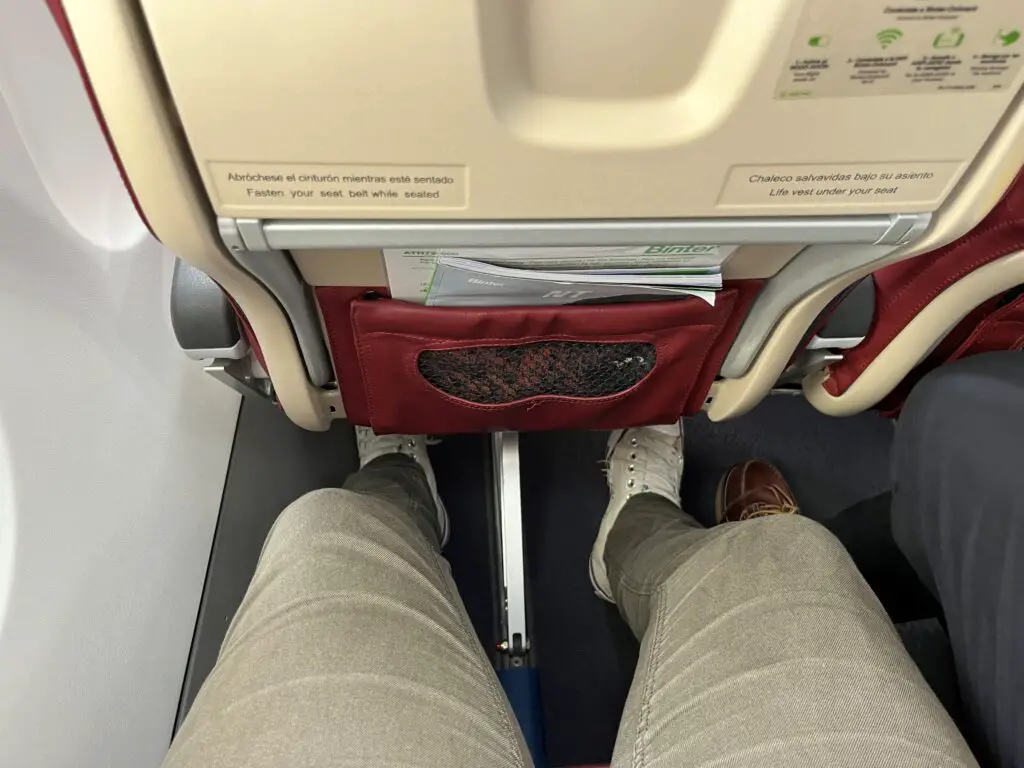
Anyway, doors were closed by 12h55, so five minutes before scheduled departure, with engines started by 12h57.
A minute later, that very famous pushback proceeding happened. Binter uses the reverse thrust of its ATRs, so it does not need to hire a truck to do it. It was fun witnessing it inside the airplane.
Taxi to the active runway, 03L, didn’t take long either, and at 13h02 we were taking-off. The ATR is a quiet plane (even though we were close to the engine) and, in this very short hop to Tenerife Norte, it climbed with ease.
The view of Las Palmas’ apron showed some of the diversity of traffic one can see in this airport.
Because that was a very short flight — one can see Tenerife from Gran Canaria and vice-versa! — we didn’t climb to a high altitude. We cruised at 8,000 feet only; it was really a panoramic flight, so the views from Gran Canaria were the highlight of the flight.
In this very quick shuttle, one could not possibly highlight the crew, given that they barely had time to interact much with customers (by my canonical records, which started in 2014, this is the shortest flight I ever did).
They did look very motivated in the brief interactions they had with everyone, but again, the flight is so short that service is not top of mind for customers; as long as it’s cheap and faster than the boat, that’s the catch.
Speaking of boat, we passed by some on our way to Tenerife — as you can see below. As soon as we reached our cruise altitude, at 13h13, only eleven minutes into the flight, we started our descent.

Descent did not take long either, and the views of Northern Tenerife also looked good.
We made a smooth touchdown at Tenerife Norte’s runway 30 at 13h24, clocking only 22 minutes of flight and arriving six minutes before schedule.
Tenerife Norte is the smaller of the two airports on the island, so taxi was fast and shortly we were parked.
Before we got off the plane, the flight attendant offered us a smile and a small snack — a Binter-branded wafer, which they also offer in their snack box in longer flights — so that was a nice touch. Not bad for a 22-minute flight, if you ask me.
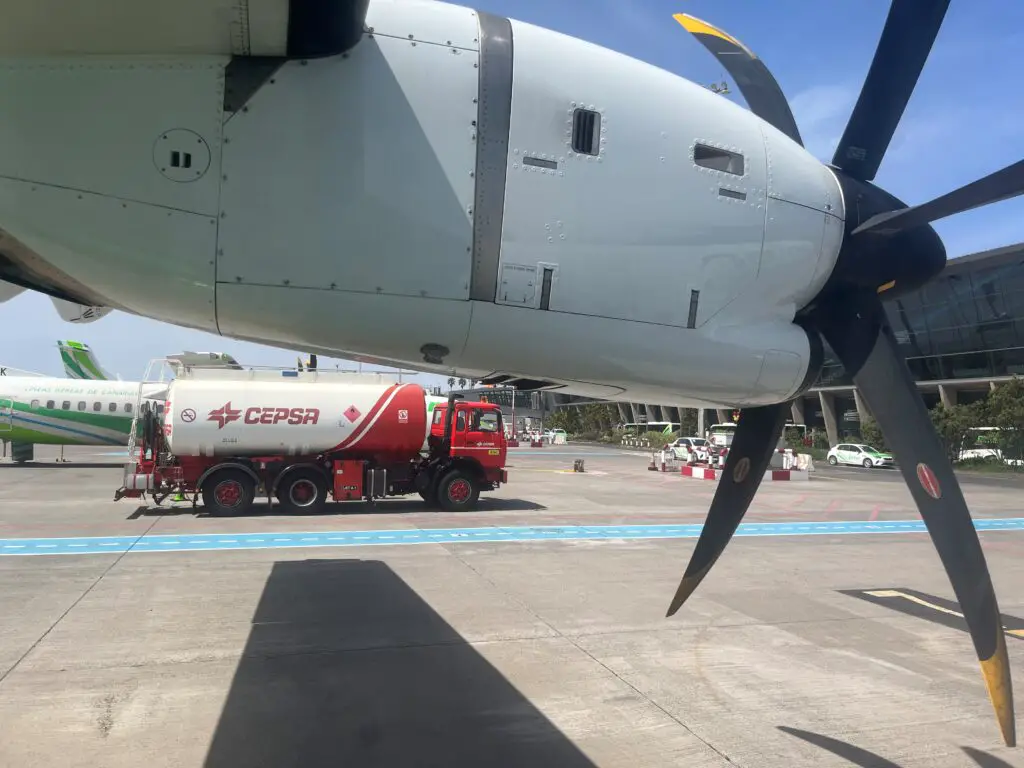
In less than five minutes we were inside our taxi to the nearby city of San Cristóbal de La Laguna, where we would have lunch.
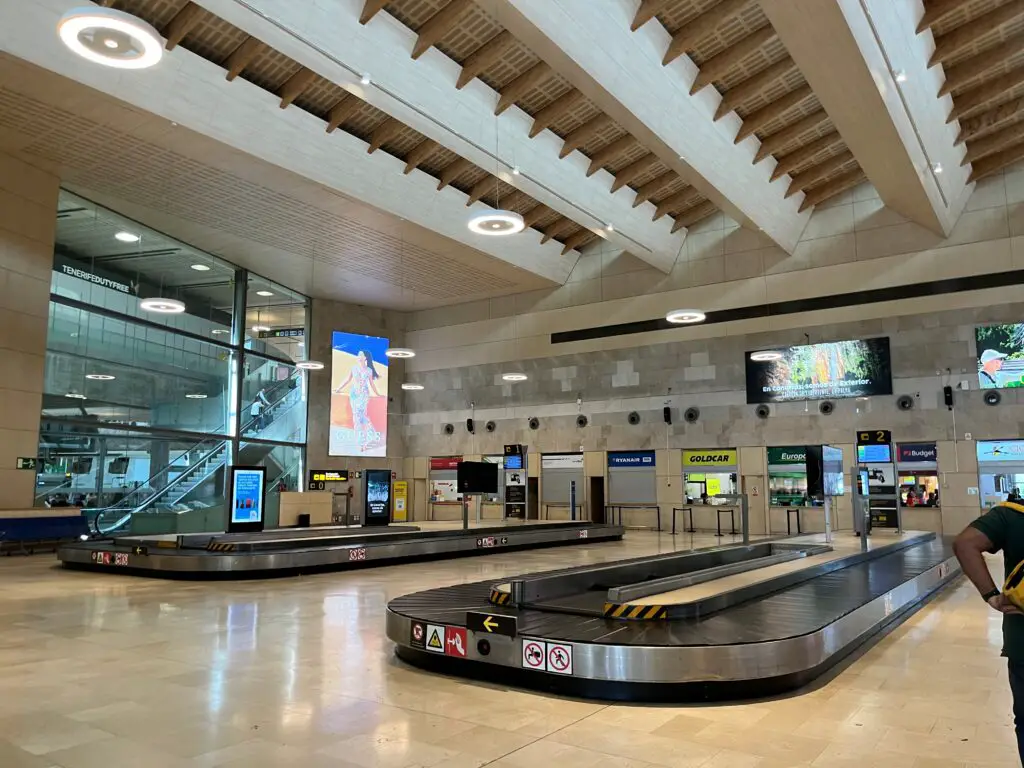
Lunch was great, in a small restaurant called Bodegón Viana, which I thoroughly recommend.
In some two hours we were back at the airport.
NT168 TFN-LPA
Now as I said Tenerife Norte is the smallest (and oldest) of the two airports on the island, with the other, of Tenerife Sur, being much more structured.
Nowadays, Ciudad de La Laguna International largely caters to domestic operations — the vast majority of the interisland flights operate there, since it is much closer to Santa Cruz de Tenerife, the largest city of the island. In theory, there is no restriction into international flights, but these usually depart from the Southern terminal.
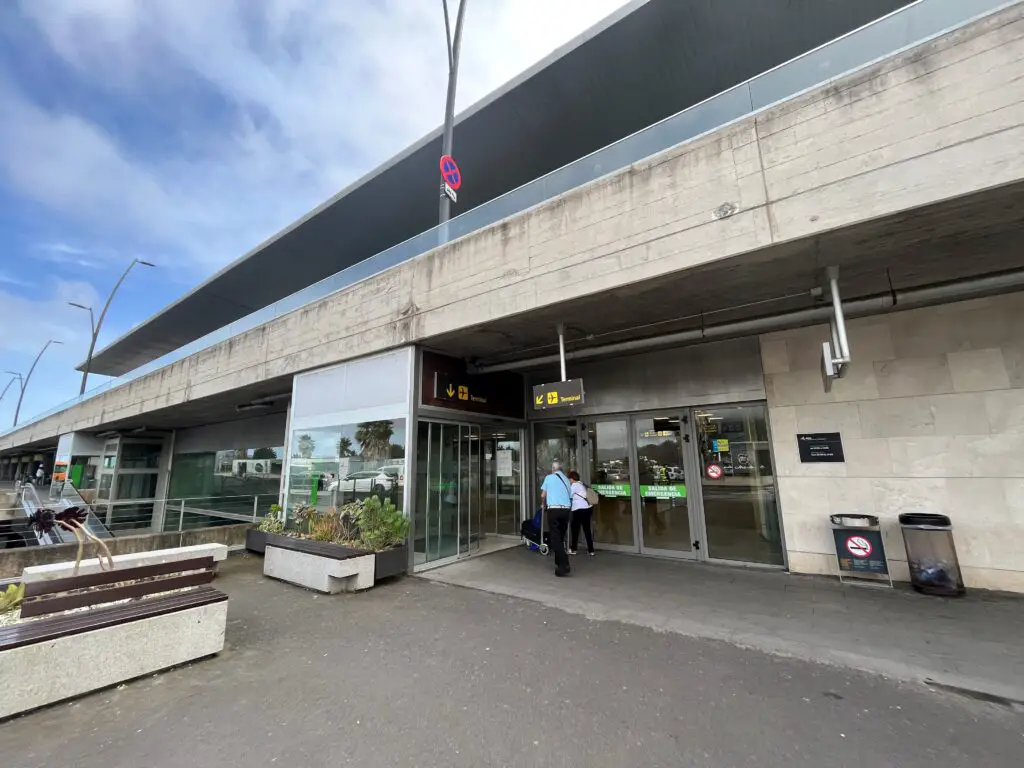
Tenerife Norte, in fact, has the only nonstop connection between the Canary Islands and Latin America; Plus Ultra operates a weekly run, with their Airbus A330-200, to Caracas. They even have a ticket office there, which was closed that afternoon.
While the terminal building was pretty, it really looked more functional than anything else. We made our way to the check-in counters to change seats, which was made without any issues.
Binter seems to have the upper hand here, with over half of all departures this month, according to Cirium. Besides a million interisland flights with ATRs, there are some widebodies operating in Tenerife Norte, too, with Plus Ultra’s A330 and a daily run to Madrid on Air Europa’s 787.
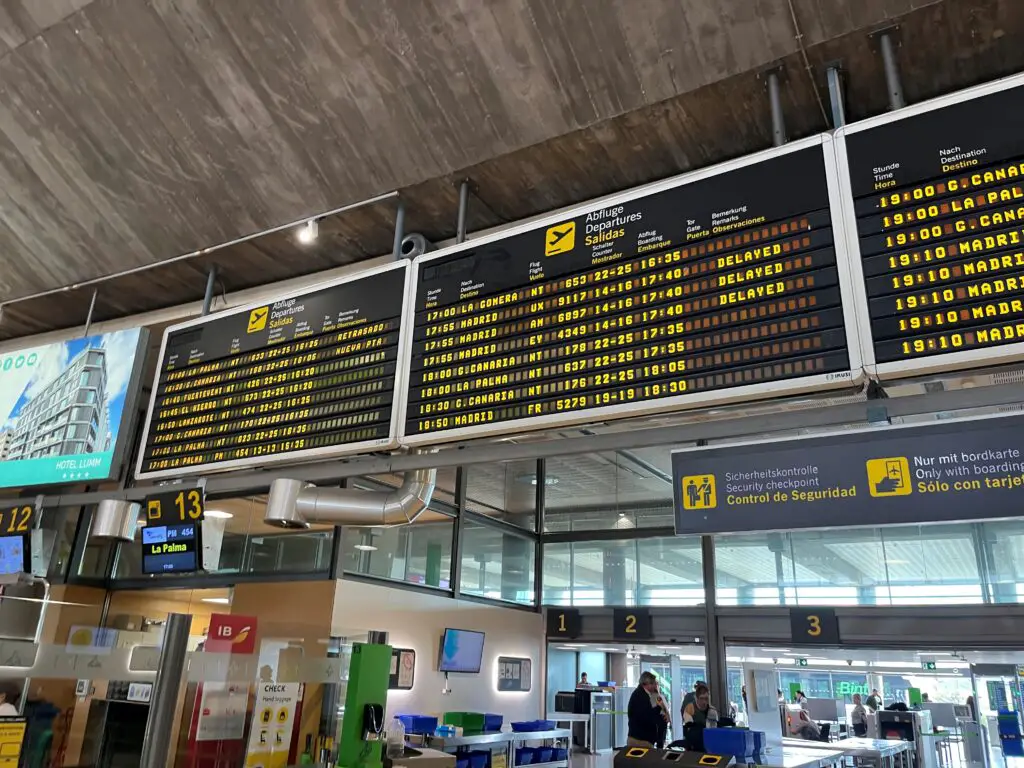
As we quickly made our way through security onto the airside, our flight was already being called for boarding.
It was all by made by bus (surprisingly so, as the planes were quite close to us): that’s because our airplane was parked far from the gates. It had arrived from Fuerteventura an hour earlier.
Our aircraft for the flight back to Las Palmas was EC-NVC, named «Madeira» after the Portuguese island of the namesake archipelago. Binter has a contract with the Portugal government, whereby it connects Madeira to the other major island of the archipelago, Porto Santo.
According to Planespotters.net, this aircraft was brand new to Binter last June. There is only one ATR in the airline’s fleet, EC-NVD, that is more recent than NVC, having been delivered in November last year.
And that afternoon, I had taken the best seat in the house; the «lounge» with rear-facing seats at the front of the cabin.

It was quite reminiscent of some stories I’ve always heard, like Southwest’s early-day 737s in America or Varig’s Electras in Brazil. The space for the legs, of course, was not bad at the least.

Doors were closed at 16h27, with engines started two minutes later, six minutes ahead of schedule.
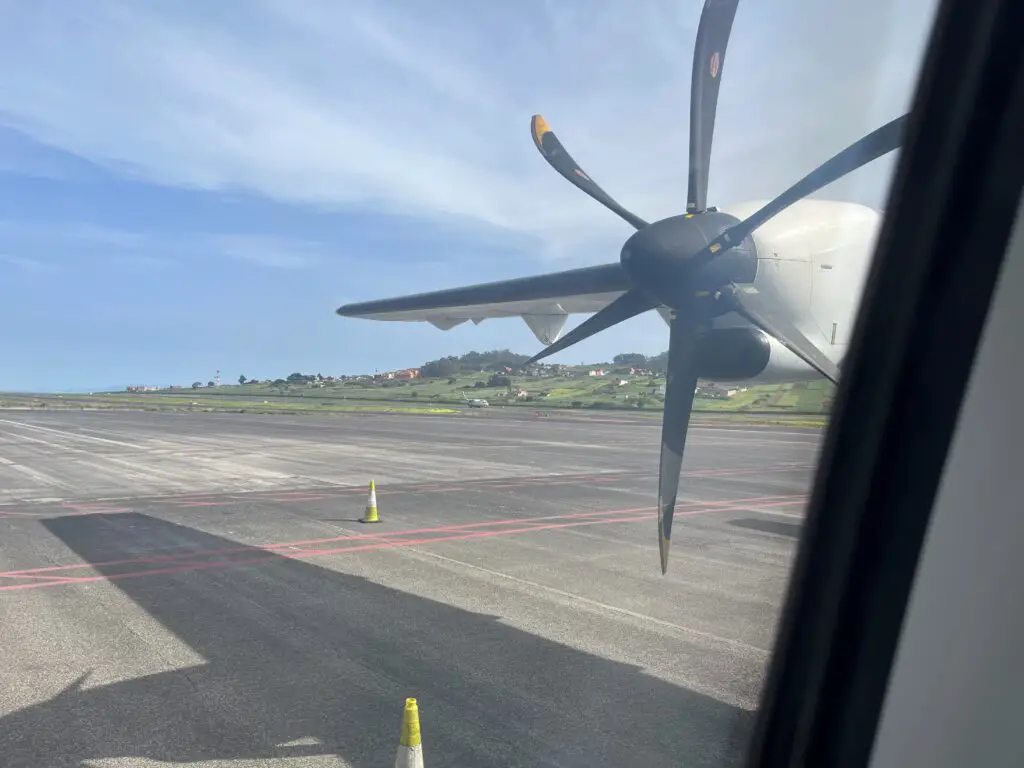
That fun pushback proceeding soon followed, as well as taxi.
Take-off from runway 30, at 16h35, provided great views of the Northern part of Tenerife.
Because the routing was less straightforward due to the departure and approach procedures, the flight took a little bit longer. After take-off, we made a 180º turn as we climbed to our cruise altitude of 9,000 feet.
Descent into Las Palmas was started at 16h50. We entered the approach into runway 03R to the North of the airfield (photos below), we entered the downwind leg and landed five minutes behind schedule, at 17h05.
As we taxied to our gate, this Jet2 Airbus A321 took off, taking some happy Britons back home.
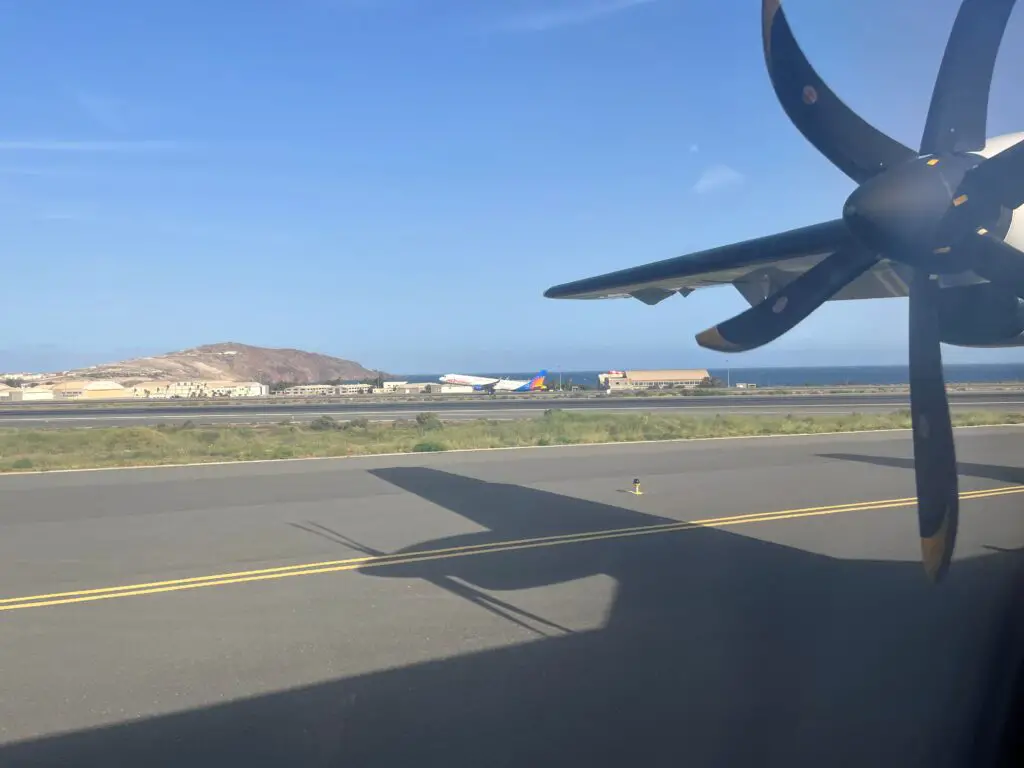
We parked by EC-MTQ «Virgen de La Candelaria», which was being turned around from and to Tenerife Sur. In the background, Air Europa’s Boeing 787-8 EC-MPE operating a rotation from Madrid.
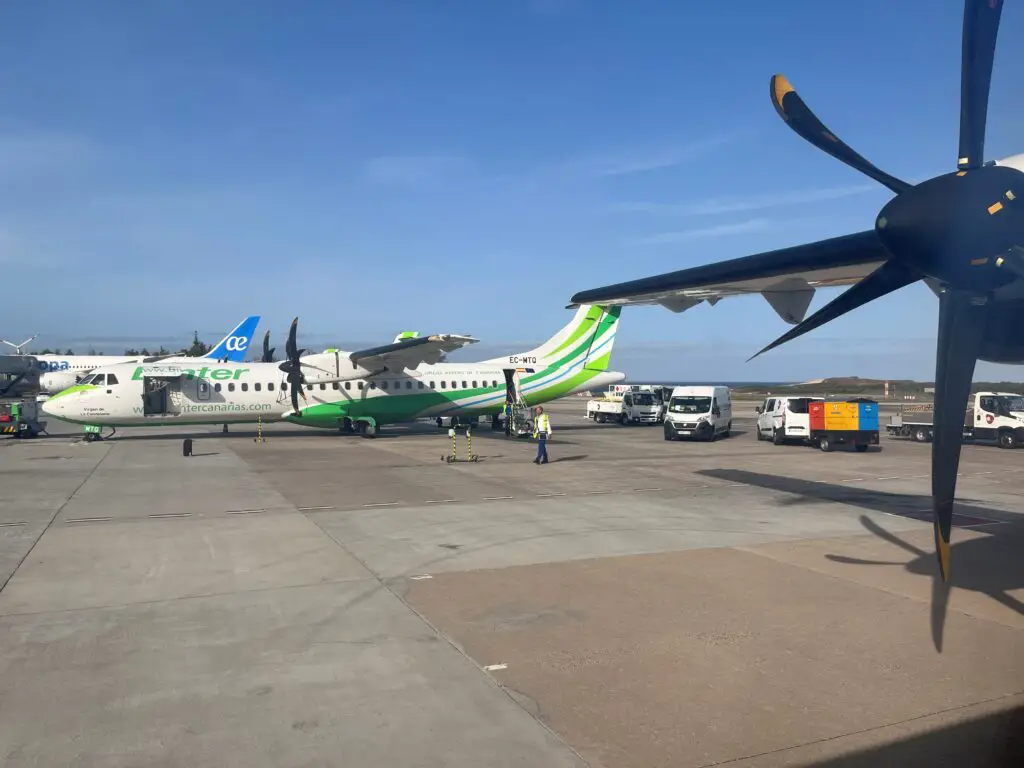
«Madeira» would continue on to Lanzarote an hour later.
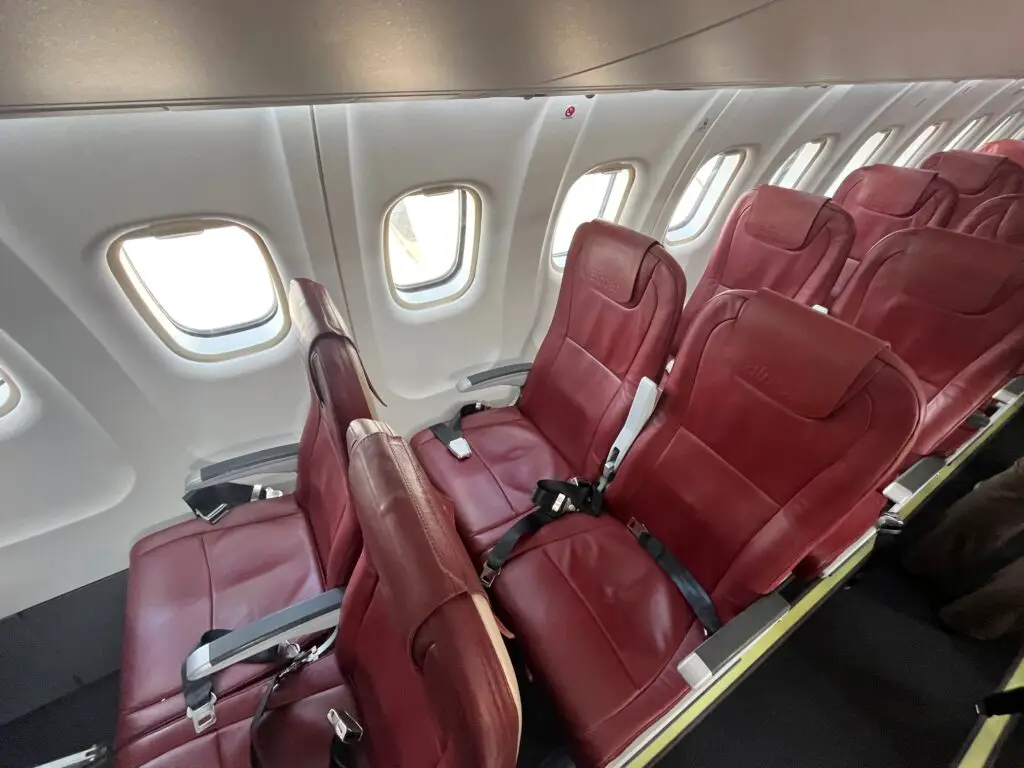
In little to no time, we were back to the check-in area which, at this time, was empty.
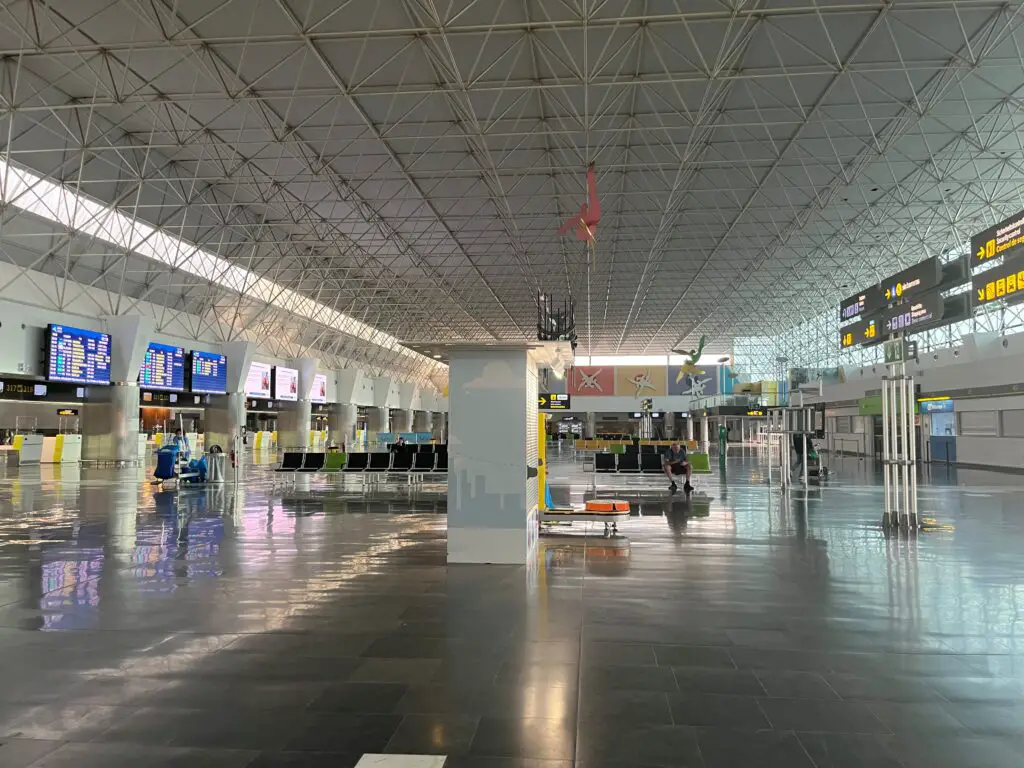
It was a fine afternoon with Binter, and a great experience overall.
Final remarks
One critical factor an airline should take in consideration when operating such high-frequency shuttles is not the service, never mind when you are talking about such short hops.
After all, the airline can not — and needs not — remove seats from the aircraft or provide fancy catering; that would add unnecessary cost at a trade-off that, much likely, is higher than the additional demand. Much more important is the frequency, the reliability, and the seamlessness of the service, and here, I think Binter does a great job at it.
In the Las Palmas-Tenerife Norte sector alone, the airline offers up to 21 daily frequencies. For the Canary residents, there is the government subsidy, which means a roundtrip can cost around 40 euros.
The price can be the same as the boat’s (it varies according to the date), but the pitch here for Binter is that it is actually faster than the ferry, which, from Las Palmas to Tenerife, takes 80 minutes instead of 25. Even when you add the other time components of shuttle to and from the airport, safety screenings and wait, it is still worth it to go by plane.
Add to this equation the friendly service, the ease of booking (Binter has finally launched an updated website) and the very high number of frequencies between cities — and the crucial reliability that should, and does, come with it: one can only have a winning formula.
So there is a reason why Binter felt like outgrowing the Canaries with its flights to Continental Europe; it believes its hold in the interisland market is consolidated enough that it can safely grow elsewhere. That, despite the competition with the ferries and with Canaryfly.
And, as far as I saw from the interisland experience, it seems Binter has earned this.

